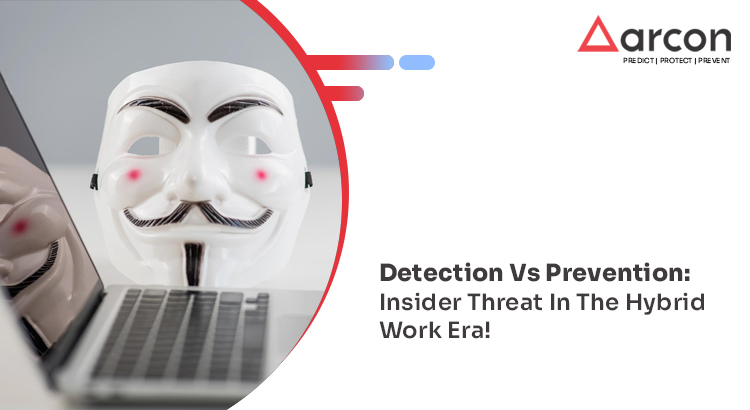The shift to hybrid work has dissolved the traditional security perimeter.
Employees, contractors, and partners now access enterprise systems from homes in Warsaw, co-working spaces in Dubai, coffee shops in Singapore, or beach resorts in Bali — often across personal devices and unmanaged networks.
While this global flexibility fuels productivity and agility, it also widens the attack surface for insider threats: malicious actions, careless mistakes, or compromised accounts that originate from within.
In this borderless landscape, trust can’t be assumed — it must be verified, monitored, and governed.
That’s where Privileged Access Management (PAM) becomes critical — ensuring every privileged session is secure, contextual, and auditable, no matter where it begins.
At ARCON, we help organizations worldwide build a Zero Trust culture that protects what matters most — even when access starts halfway across the globe.
Because in the hybrid era, visibility is the new perimeter.
Notable incidents linked to remote/insider access paths
- Victim: A renowned password and identity management company (2022)
What Happened: Attackers targeted a DevOps engineer’s home computer, exploited a vulnerable third-party media app (Plex), planted a keylogger, and ultimately accessed cloud storage holding customer vault data. This is a classic example of home device ≠ enterprise hygiene.
- Victim: A popular ride-hailing and transport services company (2022)
What Happened: An external contractor’s account was compromised; the attacker used MFA fatigue (repeated push prompts) after malware on the contractor’s personal device exposed credentials. The contractor eventually accepted a prompt, granting access and information abuse.
- Victim: A renowned American technology conglomerate (2022)
What Happened: Initial access via an employee’s personal Google account that was syncing company passwords through the browser. From there, attackers accessed VPN and moved further.
Best Practices for Managing Security Personnel in Remote Environments
Airport lounges, hotels, cafés, conference centers—great for productivity, risky access. Executives handle the most sensitive systems, so treat every public network like it’s hostile. While there is an array of golden rules for the CIOs, CISOs, or CTOs while traveling, the organization also needs to have some policy notes in place.
- Enforce phishing-resistant MFA, device posture checks, and PAM JIT for any privileged action from non-office IPs.
- Geo-/risk-based access: step up auth on unfamiliar countries or networks.
- Session recording & keystroke redaction for admin sessions; alert on anomalous commands.
- Travel Mode profiles: auto-tighten DLP, disable copy/paste to personal apps, and block credential export while roaming.
- With maker-checker workflow the accuracy and accountability are improved, errors and fraud are minimized, and compliance is ensured by implementing a segregation of duties.
Indicators to Watch
- Anomalous access: Unusual logins (new geographies, odd hours), bypassing MFA prompts, or sudden spikes in privilege use.
- Suspicious data activity: Bulk downloads, mass mailbox exports, or repeated access to projects outside one’s role.
- Policy evasion: Usage of unsanctioned file sharing, encrypted personal archives, or attempts to disable endpoint controls.
- Behavioral shifts: Friction with management, financial stress signals, or disengagement—correlated (carefully and ethically) with technical alerts.
Detection Strategies that work
- Identity-centric monitoring
Aggregate signals from IAM, SSO, and endpoint telemetry. Baseline normal user behavior and flag deviations with UEBA (User & Entity Behavior Analytics).
- Least privilege with just-in-time (JIT) access
Replace standing admin rights with time-bound, approval-gated privileges and detailed session recording.
- Data loss prevention (DLP) for the cloud
Apply content inspection and context-aware policies across email, storage, and collaboration suites; tag and encrypt sensitive data at creation.
- Zero Trust controls
Continuously verify device health, user risk, and session context before granting or maintaining access.
- Deception and canary assets
Plant honey tokens and decoy files; any interaction is a high-fidelity signal of malicious exploration.
Prevention is a program, not a product
- Strong governance: Classify data, define access by role, and enforce separation of duties for high-risk functions.
- Secure-by-default endpoints: Mandatory disk encryption, automatic patching, and controlled USB/media policies.
- MFA everywhere: Phishing-resistant methods (e.g., FIDO2) for privileged and high-value workflows.
- Human-centric training: Short, scenario-based micro-learnings tied to real tools (e.g., “when to share, when to escalate”).
- Clear consequences and safe channels: Documented policies, anonymous reporting, and supportive processes reduce both negligence and retaliation of fears.
How ARCON Solutions Help
ARCON | PAM
- Just‑in‑Time Privilege: Elevate precisely when needed with reason codes and auto‑expiry; dramatically reduces standing admin rights.
- Session Monitoring & Recording: Command‑level visibility and playback for SSH/RDP/SQL with tamper‑evident, immutable audit trails.
- Credential Vaulting & Rotation: Centralize secrets, rotate on check‑in/check‑out, and eliminate hardcoded credentials.
- Discovery & Access Path Mapping: Surface shadow admins, lateral paths, and over‑privilege hotspots.
ARCON Secure Browser Extension & Gateway
- Reverse‑proxy brokering for sensitive web apps; access is whitelisted only when brokered via the plugin to the gateway.
- Contextual Controls inside the browser session (clipboard, download, print, screenshot) with granular exceptions.
Immutable Access Audit (Roadmap/Option)
- Blockchain‑backed audit to make session events tamper‑evident across long retention windows.
- Post‑quantum readiness: roadmap to transition critical cryptography to lattice‑based schemes to protect vault credentials and session logs against future threats.
ARCON CCM (Configuration Comparison Management)
- Detects drift across privileged targets; flags high‑risk changes linked to insider activity.
Outcome: Customers report sharper detections, faster investigations, and measurable reduction in standing privileges—without strangling productivity.
Conclusion
In the hybrid work era, insider risk is almost inevitable — but its impact is entirely preventable. As organizational boundaries blur and remote access become the norm, trust can no longer be static; it must be earned continuously through identity assurance, contextual controls, and behavioral intelligence.
Forward-looking enterprises are moving from reactive defenses to identity-first, Zero Trust architectures, where every access request is verified, every privileged session is monitored, and every anomaly is investigated in real time.
The key lies in unifying people, process, and technology — embedding cybersecurity not as a gatekeeper, but as a strategic enabler of productivity and trust. With ARCON’s advanced PAM suite and continuous behavioral analytics — organizations can detect early, respond intelligently, and prevent breaches before they occur.

